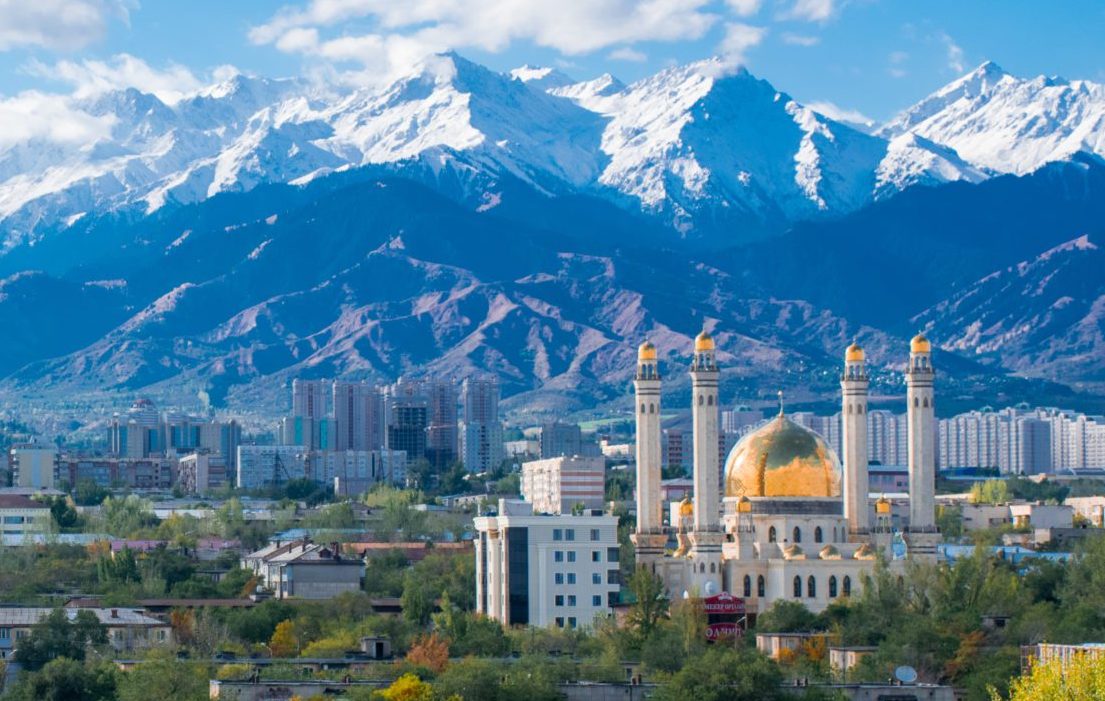Chaos In Kazakhstan

Mass protests broke out in Kazakhstan Sunday in response to surging fuel prices, but quickly took on a life of their own and turned to calls for wholesale reforms, resulting in some of the bloodiest unrest the country has experienced since Kazakhstan declared its independence just over 30 years ago.
The unrest spread in several cities throughout Kazakhstan, but centered on Almaty, the country’s largest city and former capital, where anti-government rioters overran the airport and surrounded two hospitals. Almaty’s City Hall, formerly the headquarters of the Communist Party, had been set ablaze by arsonists, as was a presidential residence, other businesses, and several vehicles. Videos posted on social media and elsewhere also showed rioters, some of them armed, looting local businesses and other establishments en masse. The chaos resulted in upwards of 40 deaths, including that of at least 18 police officers or other security personnel members—two of which were found beheaded. Another 750 security officers were injured. As for the demonstrators, 1,000 or so were injured, 400 of whom were hospitalized, and nearly 4,000 have been detained.
Several consecutive days of destruction and devastation wrought by these rioters left Kazakhstan’s government with little options. With already politically repressive tendencies, the Kazakh government determined the rioters had to be repelled with force.
A statement from Kazakhstan President Kassym-Jomart Tokayev Wednesday night effectively declared that Kazakhstan was under attack and called upon the Collective Security Treaty Organization (CSTO), the Russian foil to NATO, to intervene. The Kazakh president invited the aid of the Russian military, as well as the aid of other Central Asian countries, to stop the “band of terrorists,” which Tokayev suggested may have received training abroad. In total, the CSTO sent approximately 2,500 troops to assist Kazakhstan in protecting government and military buildings and installations as part of what it called a temporary peacekeeping mission.
When Russian and troops from other nations in the CSTO descended upon Almaty, they found a city in utter pandemonium. Kazakh security forces, now reinforced with allied troops, opened fire on certain groups of demonstrators, some of whom were armed. Throughout the night, sporadic gunfire echoed throughout the city.
Galym Ageleulov, an eyewitness to the events and director of the human rights center Liberty in Almaty, told the New York Times that he believed criminals had co-opted the demonstrations. Ageleulov claimed that those on the streets late into the night, those responsible for most of the damage and violence, were predominantly young men—some of whom posted on social media posing with riot gear they had taken from security officers. “These gang members marched through the city looting stores and setting cars ablaze as they moved; they stormed the City Hall,” Ageleulov told the Times in a phone interview.
But Ageleulov also suggested that what unfolded in Almaty was far more than petty criminals attempting to seize the moment and make a quick buck. He claimed that these agents of chaos were organized by the likes of gang leaders and other criminal elements.
On Thursday morning, Almaty residents emerged from their homes to a shell of what the former capital once was. Kazakhs scrambled to ATMs to withdrawal enough tenge to last the mandated closures of commercial banks. The fortunate businesses that were not looted remained shuttered, causing breadlines the likes of which Kazakhstan hasn’t seen since the fall of the Soviet Union. Intermittent cessations in telephone and internet services compounded the broader disruption.
The Kazakh interior ministry later announced in a televised statement that the government had regained control over all the city’s major government buildings.
To many, the unrest in Kazakhstan comes as quite a shock. Since declaring its independence from the Soviet Union in 1991, Kazakhstan has been relatively stable compared to other countries in the region. While it remains autocratic and well within Russia’s sphere of influence, Kazakhstan has managed to turn its large oil reserves and other resource deposits into a lucrative industry that helps prop up the nation’s economy and treasury. It’s GDP per capita is far higher than other countries in the region. Though it has enjoyed more political and economic stability than its neighbors, economic inequality has continued to rise, causing a ripple effect especially prevalent in the attitudes of Kazakhstan’s urban elites versus that of its working poor.
Certainly, the major task of the relatively-new Tokayev administration is to put proper reforms in place if Kazakhstan wishes to avoid more bloody unrest in the future. However, if calls for liberal reforms are brought with the destruction of cities, mass looting and bloodshed, and alleged extrajudicial executions of police officers by a mobocracy, they shouldn’t be surprised if their pleas fail—because they deserve to.
Comments